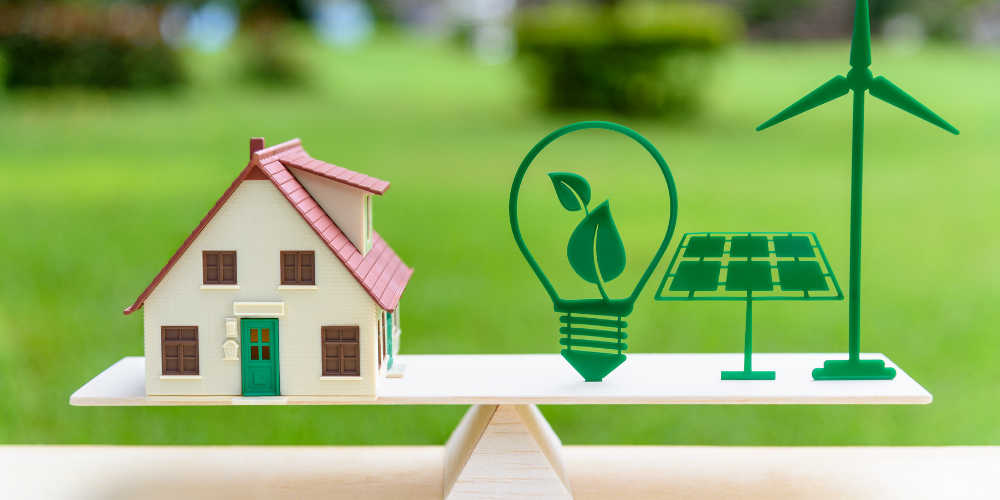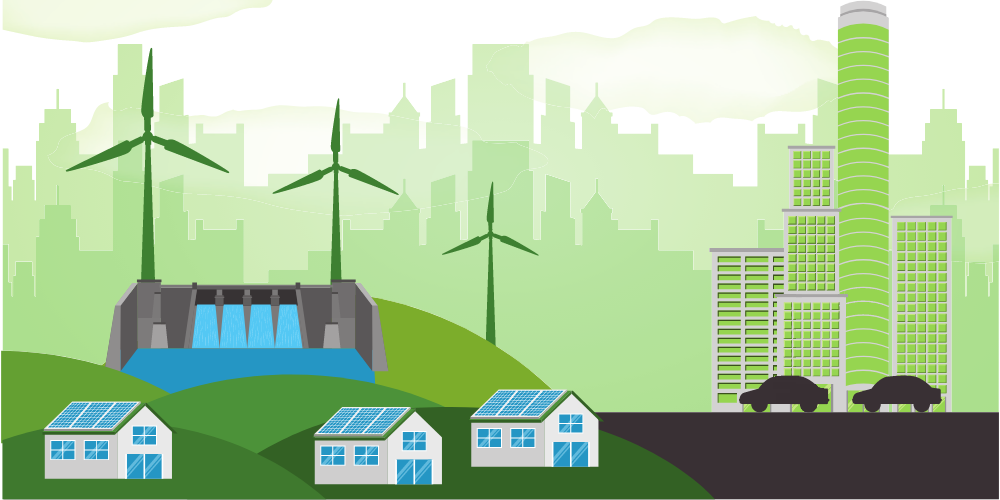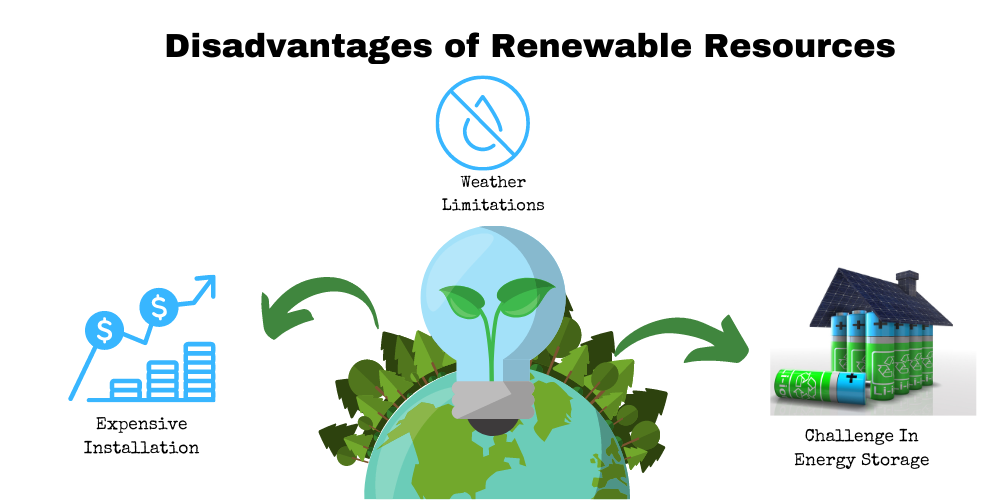The Problems with Renewable Energy

Renewable energy has taken over energy generation by leaps and bounds. As the public becomes aware of the downsides of fossil fuels, they are more likely to opt for renewable energy technologies. However, there are some renewable energy disadvantages which you should be aware of if you want to generate electricity from renewable energy sources.
Renewable energy technologies are the way to go despite the disadvantages of renewable energy. Renewable energy resources are bountiful and are set to get even more present as global warming takes its toll and the USA government makes plans to generate electricity from any available and sustainable source.
What Is Renewable Energy?
If you generate energy from renewable energy sources, you are making renewable energy. Renewable energy sources are any sources that are naturally replenished in a short period, usually less than a year. There are many renewable, sustainable energy sources that are making headway in our modern society. Some of these sources include solar & wind power, geothermal and hydropower energy, and biomass energy.
Types of Renewable Energy

There are several types of renewable energy sources, depending on which element is used to generate electricity in the first place. Solar power, wind power, and geothermal energy are the three most well-known forms of renewable energy. However, Did you know that geothermal power can produce both heat and electricity generation? Read on for more details.
Solar Power
Solar power is the second most important renewable energy source we have today. As global warming hits more headlines, more solar panels can be seen on rooftops throughout the states. Solar panels are used for electricity generation on both small and large scales. Solar renewable energy farms or residential solar systems produce clean energy by converting sunshine into electricity.
Wind Power
The wind is currently one of the most popular renewable energy sources in the USA and the world. Wind energy spins wind turbines, spin generators and produces clean energy with no carbon emissions. Solar and wind power represent some of the most important renewable energy projects in the USA, with individual projects making hundreds of MW of clean energy.
Geothermal
Geothermal is also on our list of renewable energy sources. Here, renewable energy creates water of a very high temperature used to spin steam turbines, much like in a nuclear power plant or a natural gas plant. However, there are no undesired carbon emissions usually associated with fossil fuel resources typically found in coal power plants.
Hydro Power
Hydro Power was the first renewable energy source to be used in the USA. Unlike solar panels, hydropower stations provide a more reliable energy source. In hydropower stations, the flowing water is first used to fill dams and is then released. As it falls over turbines, it spins hydro generators and produces more renewable energy than a simple stream could.
Biomass
Biomass is considered a renewable energy source only if biomass can be replenished in less than a year. This leaves wood and forests out of the equation. Other sources, such as municipal waste and organic waste, can be considered renewable energy sources.
Typically, there are two ways to use biomass:
- Burning biomass,
- Digesting biomass:
- In aerobic digesters, and
- In anaerobic digesters.
This is one of the most important energy sources today, as biomass plants can also be used to take care of municipal green and kitchen waste and waste from farms.
If you burn biomass in renewable energy facilities, you release heat that can drive turbines, similar to those found in coal power stations. However, this produces a lot of carbon dioxide, which is considered a renewable source, but it cannot produce 100% green energy.
In biomass digesters, more heat is released over longer periods. In aerobic digestion, oxygen is introduced into piles of organic material, then turned into carbon dioxide. In anaerobic digestion, methane is released, which can then produce energy or power a car. This is a relatively new renewable energy technology, but it promises a lot since the only waste it produces is rich fertilizer for the great American expanses of land.
Disadvantages of Renewable Resources
As with any other energy source, there are some disadvantages of renewable energy. Still, renewable energy is much better than using fossil fuels to produce electricity, as green or renewable energy sources are limitless, and they can be used to generate energy repeatedly.
Fossil fuels, on the other hand, are associated with:
- Sulfur dioxide,
- Very high carbon footprint,
- High maintenance cost,
- High operating costs,
- Air pollution,
- High environmental impact,
- A lot of waste materials,
- Negative influence on public health, and
- Climate change.

1. Expensive Installation
Although green energy is a great way to reduce climate change effects and improve health problems that millions face, it comes at a high initial cost. Wind farms and other forms of using renewable energy cost a lot to set up. However, significant tax credits and other incentives support environmentally friendly energy generation and drive the prices down. Solar and wind already cost less to set up and run when compared to traditional generators.
2. Unreliable Energy Source Due to Weather Limitations
One of the biggest disadvantages of renewable energy is that it is unreliable. While fossil fuels are available on-demand, renewable technologies depend on the weather and other factors to run. This is why solar panels and other renewable sources are not yet fully implemented. However, breakthroughs in energy storage and a significant drop in renewable energy prices seem to make them more lucrative than fossil fuel energy.
3. Low Energy Output
Compared to traditional fossil fuels-based plants, solar and wind farms take up much more space to produce the same amount of green energy. However, the much-needed efficiency increases and ambitious carbon reduction goals make investments into the renewable industry a must; higher efficiency levels are expected from non-renewable sources.
4. Challenge In Energy Storage
With renewable energy, energy generation and energy needs do not match 100%. Most energy is consumed early in the morning and late evening when the sun does not shine as much. Green energy storage is still very expensive, but investments in renewable technologies and energy storage make them cheaper every year.
5. Geographic Limitations
Geographic factors can also influence green energy production. Solar panels in Alaska will never be as efficient as solar panels in Nevada or solar panels in Colorado. On the other hand, geothermal energy is much more present in Alaska than on the east coast, and biomass coming from organic products is frequently used to heat homes and greenhouses.
6. Renewable Energy Devices Still Have Carbon Footprints
Using renewable energy has advantages and disadvantages; however, renewable energy does not come without carbon emissions. The entire carbon footprint with green energy comes from the production of renewable energy technologies, and the question of recycling solar cells and wind turbines is still to be answered.
However, as more green energy is sent through the grid, we will use more of it to produce renewable energy technologies. The effect is similar to exponential growth: the more renewables you have, the less carbon is produced in making new solar panels and wind turbines.
7. Ineffective Distribution Network
Solar and wind power and huge wind farms sound amazing, but the aging and outdated distribution network is another disadvantage of getting them online. Significant investments are necessary to make renewable energy available to everybody.
However, many solutions can be implemented to reduce reliance on the network for renewable energy distribution:
- V2G technologies, including V2G storage, charging and distribution,
- Local community solar projects, and
- Residential solar with energy storage solutions.
Most renewable energy technologies are stand-alone solutions that can take you off the grid. So investing a lot into infrastructure to get large renewable energy facilities and renewable energy projects online is not essential at this point. Simply implementing more renewable sources into the energy portfolio is more important right now.
As coal power plants are phased out and every renewable energy source embraced even firmer, solar power and other renewable energy sources will support an average household with no issues. Renewable energy technology is the only solution we have for climate change issues.
How To Overcome The Current Problems of Renewable Resources
There are many ways to overcome the current problems of renewable resources. Renewable energy sources can be:
- Made more efficient – new technologies suggest that we are just years away from breakthroughs, such as Perovskite solar cells, large-scale horizontal wind turbines, green hydrogen as an energy source, and a low initial cost,
- Be more accessible – amazing community renewable energy projects exist throughout the states and help the economy as well: renewable energy creates jobs and drives the economy,
- Combined with energy storage options, which come in many shapes and sizes.
FAQs
What are 2 Disadvantages of Non-Renewable Resources?
The two biggest disadvantages of non-renewable sources of non-renewable energy are:
– High pollution emissions, and
– Unsustainability.
Most fossil fuels used in traditional generators today will be used up in the next few decades.
What Is The Main Disadvantage Of A Vertical Axis Wind Turbine?
The main disadvantage of a vertical axis wind turbine is the drag that is created while it moves. The drag exists with other forms of wind turbines, but the VAW turbines are especially prone to it. However, a low initial cost, the ability to install them near objects and highways, and high reliability make them a great wind energy source.
What Are The Advantages and Disadvantages of Horizontal Axis Wind Turbines?
There are many advantages and disadvantages of Horizontal Axis Wind Turbines. Advantages of HAW turbines are:
– High reliability,
– High power output, and
– High efficiency.
The main disadvantages of HAW turbines are:
– High installation cost,
– High transportation needs and costs, and
– Strict local regulation about installation practices.
Final Word
Renewable sources of energy do have some disadvantages, but they are the future of energy. Solar power, for example, is an excellent resource. With greener ways to generate energy and improvements in much-needed efficiency, we will only be able to satisfy our energy needs through renewable energy technologies in the next several decades.
The best way to reduce your dependence on fossil fuels is to look into getting green energy plans in your area. It reduces carbon emissions and helps you feel better about your living arrangements. The best thing you can do to reduce your dependence on fossil fuels and reduce your carbon emissions is to check out some green energy plans in your area and call your energy provider to see what solutions they have for those who want to enjoy the benefits of renewable energy. Remember that the green future started with green energy and that natural resources are best enjoyed when they’re not overexploited.
Updated on
